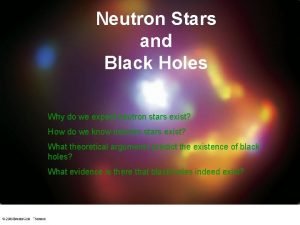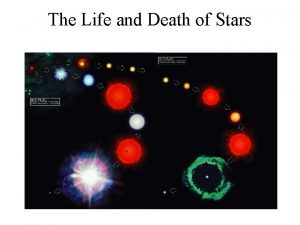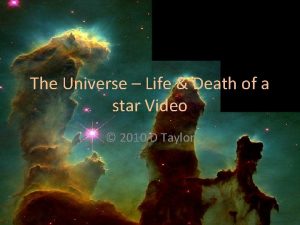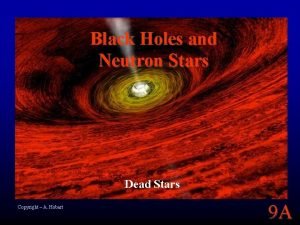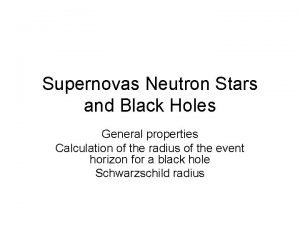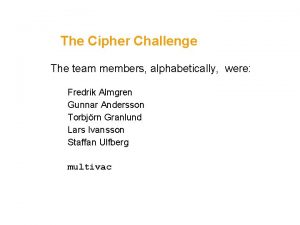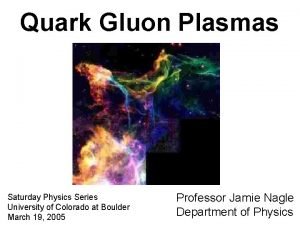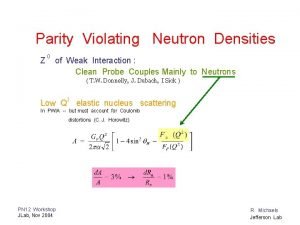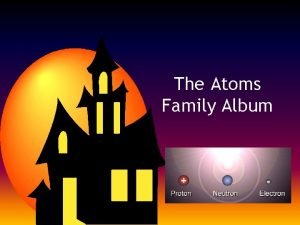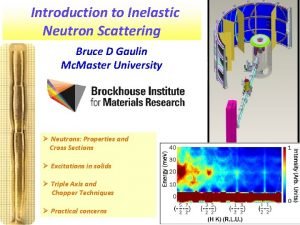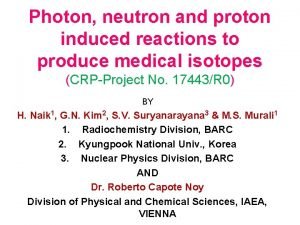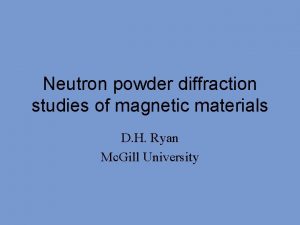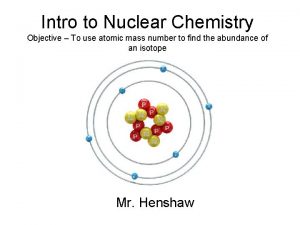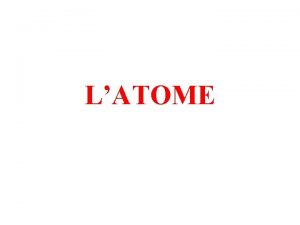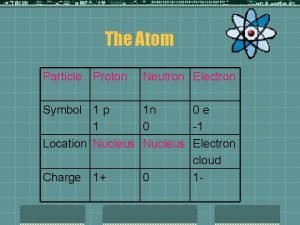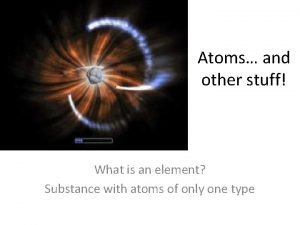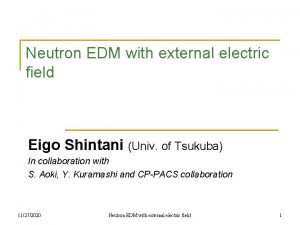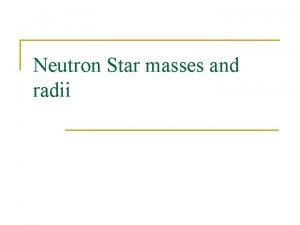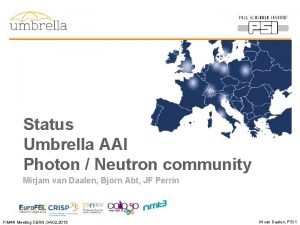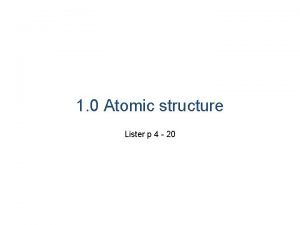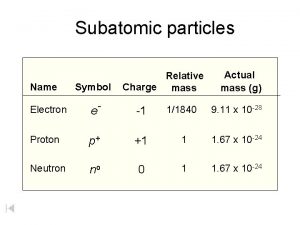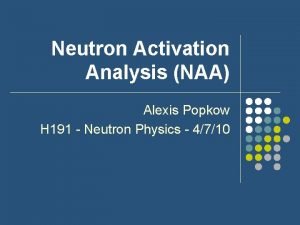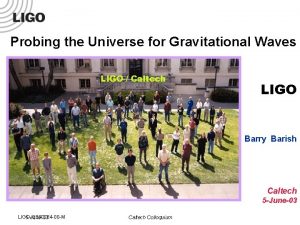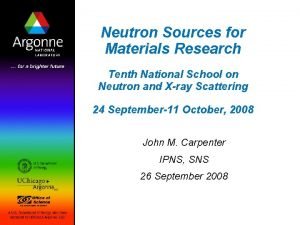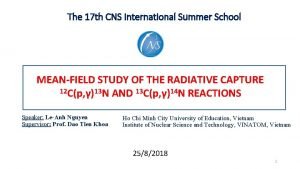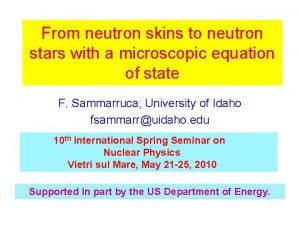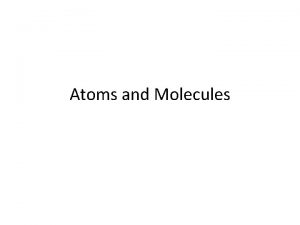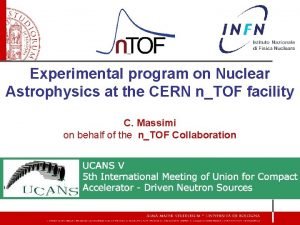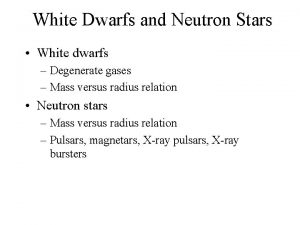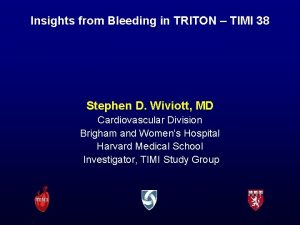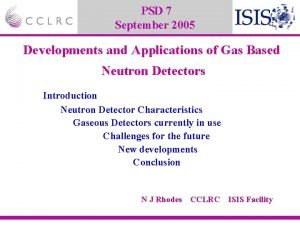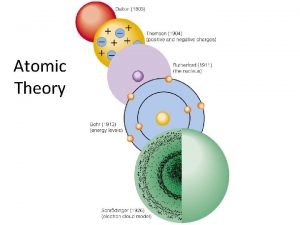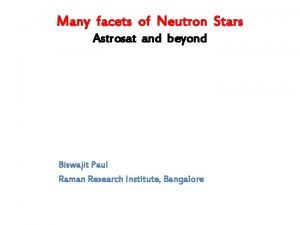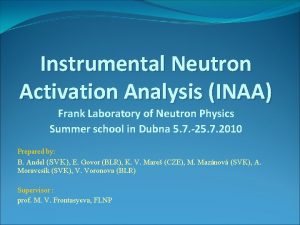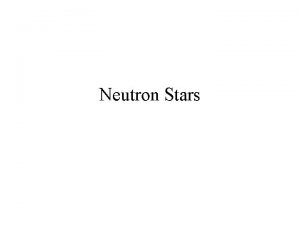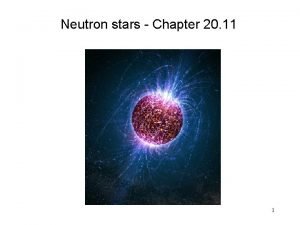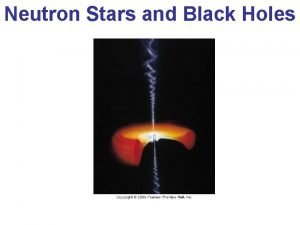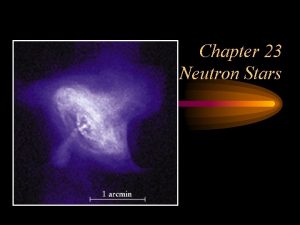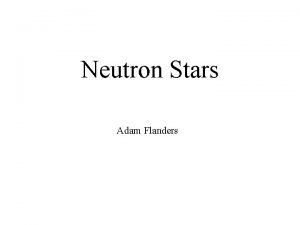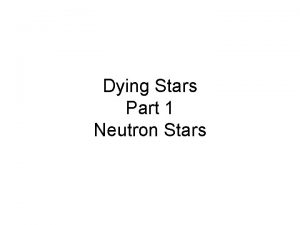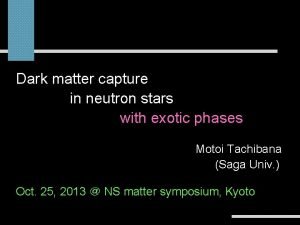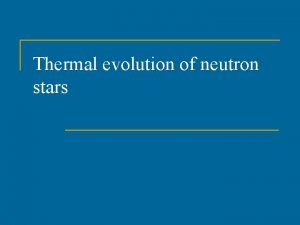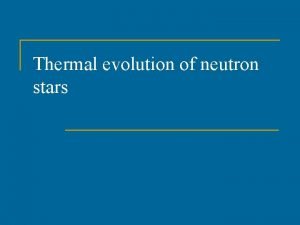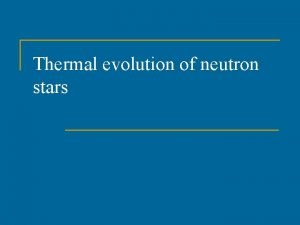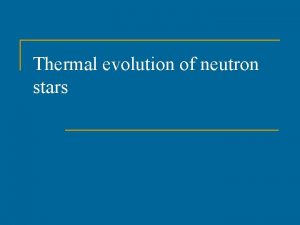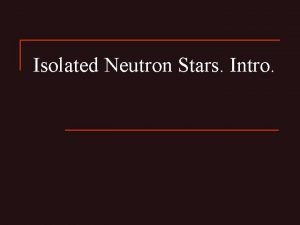Death of Stars Part II Neutron Stars 1












































- Slides: 44

Death of Stars – Part II Neutron Stars 1

REMEMBER THIS !? 2

Guiding Questions 1. What led scientists to the idea of a neutron star? 2. What are pulsars, and how were they discovered? 3. How did astronomers determine the connection between pulsars and neutron stars? 4. How can a neutron star supply energy to a surrounding nebula? 5. What are conditions like inside a neutron star? 6. How are some neutron stars able to spin several hundred times per second? 7. Why do some pulsars emit fantastic amounts of X rays? 8. Are X-ray bursters and novae similar to supernovae? 9. How massive can a neutron star be? 3

• A planetary nebula can best be defined as A a flat disk of material around a protostar. B the final state of a star having a very small size. C the evaporation of a planet when a star becomes a red giant. D an expanding shell of gas around a dying star. E a disk around a planet. 4

• A helium flash occurs A because helium is explosive and cannot be controlled when nuclear reactions occur. B because degenerate electrons in the core do not allow the core to expand as it heats up. C in Cepheid variables. D in stars with masses less than 0. 4 Solar Mass. E None of the above is true about a helium flash. 5

• Which of the following is the main source of energy for a white dwarf? A B C D E Carbon fusion. Gravitational contraction. Helium fusion. Its stored heat. Iron fusion. 6

• What physical characteristic most determines the main sequence lifetime of a star? A B C D E radius composition mass luminosity class none of the above 7

• When the solar core has mostly been transformed from hydrogen into helium, the Sun will move to the next phase of its life cycle, changing gradually into a A B C D E different type of main sequence star planet protostar red giant white dwarf 8

• After a second red giant stage, an old solar-mass star will gently eject its outer layers, leaving behind a hot, small stellar A B C D E nova. planetary nebula. pulsar. supernova remnant. T Tauri star. 9

• Using this diagram, what location is closest to a white dwarf? – – – E A B C D E 10

• Using this diagram, what location is closest to the horizontal branch? – – – E A B C D E 11

• Using this diagram, what location is closest to the ignition of core fusion? – – – E A B C D E 12

Scientists first proposed the existence of neutron stars in the 1930 s • A neutron star is a dense stellar corpse consisting primarily of closely packed degenerate neutrons • A neutron star typically has a diameter of about 20 km, a mass less than 3 times the mass of the Sun, a magnetic field 1012 times stronger than that of the Sun, and a rotation period of roughly 1 second • Zwicky and Baade proposed that a highly compact ball of neutrons would produce a degenerate neutron pressure in star remnants too large to become white dwarfs – Not verified until 1960’s 13

The discovery of pulsars in the 1960 s stimulated interest in neutron stars 14

Pulsars are rapidly rotating neutron stars with intense magnetic fields • A pulsar is a source of periodic pulses of radio radiation • These pulses are produced as beams of radio waves from a neutron star’s magnetic poles sweep past the Earth 15

• Intense beams of radiation emanate from regions near the north and south magnetic poles of a neutron star • These beams are produced by streams of charged particles moving in the star’s intense magnetic field 16

17

18

19

Superfluidity and superconductivity are among the strange properties of neutron stars • A neutron star consists of a superfluid, superconducting core surrounded by a superfluid mantle and a thin, brittle crust • There is evidence for an “atmosphere” 20

21

22

• A type-II supernova A occurs when a white dwarf's mass exceeds the Chandrasekhar limit B is the result of helium flash C is characterized by a spectrum that shows hydrogen lines D occurs when the iron core of a massive star collapses E Both C and D are true of type-II supernovae 23

Pulsars gradually slow down as they radiate energy into space • The pulse rate of many pulsars is slowing down steadily • This reflects the gradual slowing of the neutron star’s rotation as it radiates energy into space • Sudden speedups of the pulse rate, called glitches, may be caused by interactions between the neutron star’s crust and its superfluid interior or material falling onto the crust 24

25

The fastest pulsars were probably created by mass transfer in close binary systems • If a neutron star is in a close binary system with an ordinary star, tidal forces will draw gas from the ordinary star onto the neutron star • The transfer of material onto the neutron star can make it rotate extremely rapidly, giving rise to a millisecond pulsar 26

27

28

Pulsating X-ray sources are also neutron stars in close binary systems • Magnetic forces can funnel the gas onto the neutron star’s magnetic poles, producing hot spots • These hot spots then radiate intense beams of X rays • As the neutron star rotates, the X-ray beams appear to flash on and off • Such a system is called a pulsating X-ray variable 29

30

31

Explosive thermonuclear processes on white dwarfs and neutron stars produce novae and bursters • Material from an ordinary star in a close binary can fall onto the surface of the companion white dwarf or neutron star to produce a surface layer in which thermonuclear reactions can explosively ignite • Explosive hydrogen fusion may occur in the surface layer of a companion white dwarf, producing the sudden increase in luminosity that we call a nova • The peak luminosity of a nova is only 10– 4 of that observed in a supernova • Explosive helium fusion may occur in the surface layer of a companion neutron star • This produces a sudden increase in X-ray radiation, which we call a burster 32

33

34

35

Like a white dwarf, a neutron star has an upper limit on its mass • The pressure within a neutron star comes from two sources – One is the degenerate nature of the neutrons, and the other is the strong nuclear force that acts between the neutrons themselves • The discovery of neutron stars inspired astrophysicists to examine seriously one of the most bizarre objects ever predicted by modern science, the black hole 36

• The nature of the observations of pulsars is explained most simply by models of A B C D E pulsating neutron stars. pulsating white dwarfs. rotating neutron stars. rotating white dwarfs. alien radio transmissions. 37

• In a star like our Sun, the final phase of the life cycle will most likely be a A B C D E black hole neutron star white dwarf Any of the above is possible pulsar 38

• Unlike lower mass stars, more massive stars A do not run out of hydrogen in their cores before they die B eventually burn carbon in their cores C never burn helium in their cores D never burn hydrogen in their cores E end their lives by fissioning Uranium 39

• A supernova explosion may cause A fission to occur in a gas cloud. B a nearby cloud of gas to form a planetary nebula. C other nearby stars to immediately generate neutron stars or black holes. D other nearby stars to explode as supernovae. E a nearby cloud of gas to collapse to form a new star. 40

• Which of the following statements is true about neutron stars? A Neutron stars are among the brightest stars we know of. B Neutron stars obey the mass-luminosity relation. C Neutron stars obey the period-luminosity relation. D Neutrons stars often emit radio waves in two narrow beams. E None of the above is true about neutron stars. 41

• Neutron stars are made of matter that A B C D E is very dense but doesn't weigh much. is known as a Black Hole. is known as degenerate protons. is known as degenerate electrons. have had all of their electrons forced into the protons, making everything neutrons. 42

• Whether a star will end its life as a black hole, a neutron star, or a white dwarf depends most on its A B C D E surface temperature. radius. rotation rate. mass. All of the above equally. 43

Jargon • • • degenerate neutron pressure glitch millisecond pulsar neutron star nova (plural novae) pair production pulsar pulsating X-ray source superconductivity superfluidity synchrotron radiation X-ray burster 44
 How neutron stars form
How neutron stars form There are millions of stars in the space
There are millions of stars in the space The life and death of stars
The life and death of stars The life and death of a star
The life and death of a star Define forensic pathology
Define forensic pathology Neutron degeneracy pressure
Neutron degeneracy pressure Neutron star escape velocity
Neutron star escape velocity Proton neutron quarks
Proton neutron quarks Atmico
Atmico Cipher neutron
Cipher neutron Proton neutron quarks
Proton neutron quarks Parity of neutron
Parity of neutron Our family
Our family Eneutron krok 2
Eneutron krok 2 Ortec 257p
Ortec 257p Magnets for neutron diffraction
Magnets for neutron diffraction Isis neutron and muon source
Isis neutron and muon source Chlorine neutron
Chlorine neutron Proton neutron
Proton neutron Symbol proton neutron elektron
Symbol proton neutron elektron Hydrogen isotope with 1 neutron
Hydrogen isotope with 1 neutron Neutron
Neutron Neutron star
Neutron star Mirjam van daalen
Mirjam van daalen Jj chadwick
Jj chadwick Lithium neutron number
Lithium neutron number Symbols of subatomic particles
Symbols of subatomic particles Neutron activation analysis
Neutron activation analysis Binary neutron star
Binary neutron star Spallation neutron source
Spallation neutron source Cns summer school
Cns summer school Neutron skin
Neutron skin Geiger counter
Geiger counter How to find protons
How to find protons Atom proton neutron electron
Atom proton neutron electron Spallation neutron source
Spallation neutron source Crab nebula neutron star
Crab nebula neutron star Timi neutron
Timi neutron Spallation neutron source
Spallation neutron source Name of atom
Name of atom Neutron star
Neutron star Neutron labs w07
Neutron labs w07 Candela y neutron
Candela y neutron Neutron activation analysis
Neutron activation analysis Neutron star router
Neutron star router
